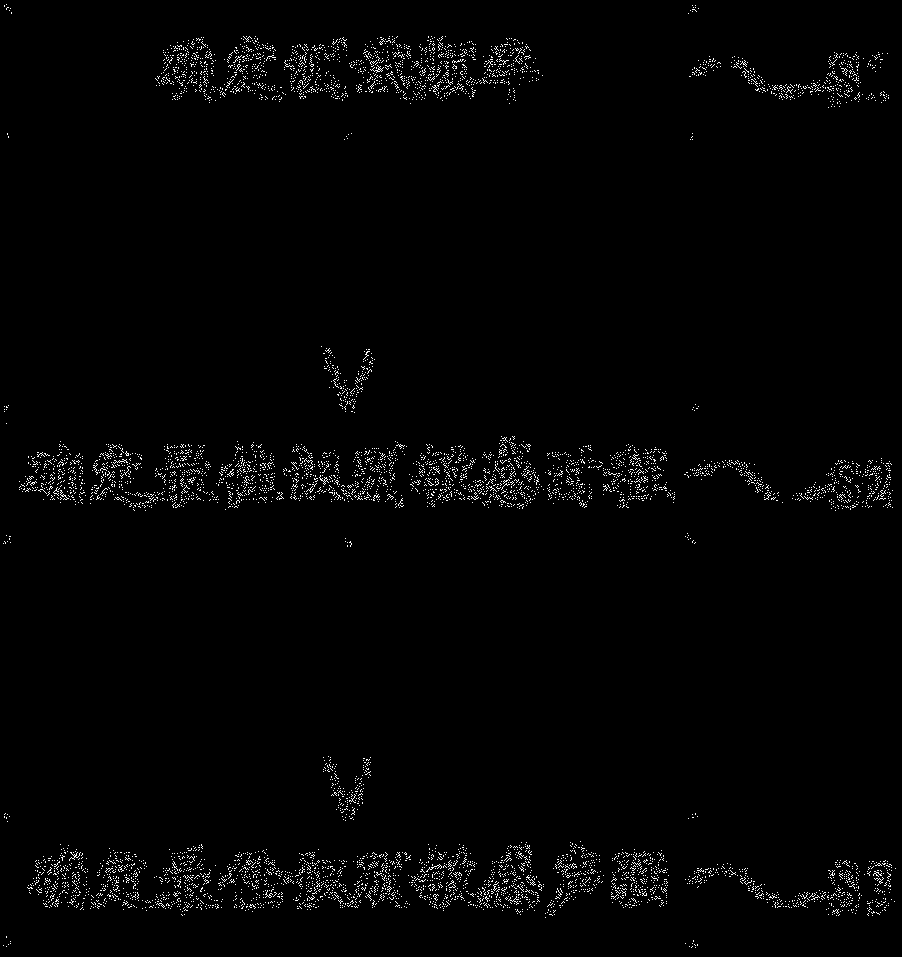Method for testing audio identification sensitivity
A test method and sensitivity technology, applied in the field of auditory recognition sensitivity testing, can solve the problems of decreased sound intensity recognition sensitivity, auditory fatigue, errors, etc., and achieve accurate and reliable results.
- Summary
- Abstract
- Description
- Claims
- Application Information
AI Technical Summary
Problems solved by technology
Method used
Image
Examples
Embodiment 1
[0022] figure 1 A test method for auditory recognition sensitivity according to an embodiment of the present invention is schematically shown.
[0023] refer to figure 1 , the testing method of auditory recognition sensitivity comprises the steps:
[0024] S1. Determine the test frequency: select the test frequency according to the needs of actual operation, and the test frequency can be selected within the range of human hearing frequencies;
[0025] The range of human ear's perception of sound is 20-20000Hz, and the test range of pure tone audiometry is 125-8000Hz, which covers almost all daily sound frequencies. 125-8000Hz is often divided into low frequency, intermediate frequency and high frequency. There are differences in the recognition sensitivity of the three ranges of sounds, the middle frequency is the most sensitive, the high frequency is the second, and the low frequency is the least sensitive.
[0026] During the test, any frequency can be selected for operat...
Embodiment 2
[0034] Based on the method of Example 1, the specific test process of the subject is exemplified as follows:
[0035] Take 1000Hz as an example, perform conventional pure tone audiometry on 1000Hz, and measure the hearing threshold under normal conditions. For example, if the subject’s 1000Hz conventional audiometry threshold is 10dBHL, then conduct a stimulation time course test at 10dBHL. The method is as follows:
[0036] Inform the subjects that when they hear the sound of the earphones, press the answer button as quickly as possible. The testing equipment is equipped with a timing device. When the stimulus stops, it will start timing until the subject presses the answer button to stop. is the reaction time T.
[0037] The operator sequentially gives 300ms, 500ms, 1s or even longer 1000Hz, 10dBHL stimulation sounds, and records the reaction time of the subjects under different time courses.
[0038] The reaction time T of a normal person is 150-400ms. When a stimulation s...
PUM
 Login to View More
Login to View More Abstract
Description
Claims
Application Information
 Login to View More
Login to View More - R&D
- Intellectual Property
- Life Sciences
- Materials
- Tech Scout
- Unparalleled Data Quality
- Higher Quality Content
- 60% Fewer Hallucinations
Browse by: Latest US Patents, China's latest patents, Technical Efficacy Thesaurus, Application Domain, Technology Topic, Popular Technical Reports.
© 2025 PatSnap. All rights reserved.Legal|Privacy policy|Modern Slavery Act Transparency Statement|Sitemap|About US| Contact US: help@patsnap.com



